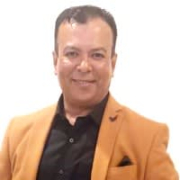


VMware Aria Operations and Morpheus compete in the cloud management space. VMware Aria Operations has an advantage in performance optimization and predictive analytics, whereas Morpheus stands out with its extensive automation capabilities and user-friendly interface.
Features: VMware Aria Operations offers predictive analytics, capacity planning, and seamless integration capabilities with its monitoring tools. It is especially noted for its performance optimization and robust alerting systems. Morpheus excels in cloud management with a focus on automation, offering strong multi-cloud integration and a flexible environment that users find intuitive.
Room for Improvement: VMware Aria Operations could benefit from a more intuitive user interface and improved alert management to simplify configuration for users. Enhanced integration capabilities are also desirable. Morpheus faces challenges with complex navigation for advanced features and requires better support for workflow automation and integration within virtual environments like NSX-T, along with improved multi-tenancy support.
Ease of Deployment and Customer Service: VMware Aria Operations provides deployment flexibility across on-premises, hybrid, and public clouds, though user experiences with technical support vary, sometimes involving slower resolutions. Morpheus, praised for its hybrid cloud support and consistent customer service, can enhance guidance for complex deployments.
Pricing and ROI: VMware Aria Operations often requires higher upfront costs due to a licensing model that can become expensive as environments scale, yet offers substantial ROI from operational efficiencies. Morpheus presents a more flexible and potentially cost-effective pricing model based on the number of virtual machines, particularly beneficial for multi-cloud environments, though costs may increase with larger implementations.



IBM Turbonomic offers automation, planning, and right-sizing recommendations to streamline resource management, improve efficiencies, and optimize costs across virtualized environments and cloud platforms.
IBM Turbonomic is valued for its capability to optimize resource allocation and monitor virtual environments efficiently. It facilitates automated decision-making in VM sizing, load balancing, and cost optimization for both on-premises and cloud deployments. Users can leverage insights for workload placement, ensure peak performance assurance, and effectively right-size across VMware and Azure. The ongoing transition to HTML5 aims to improve visual and navigational ease, while expanded reporting features are anticipated. Opportunities for improved training, documentation, and integrations enhance platform usability and functionality.
What Are the Key Features?In finance, IBM Turbonomic aids in maintaining platform efficiency during market fluctuations. Healthcare organizations leverage its capability for resource optimization during high-demand periods to enhance patient care support. Retailers use it for planning in peak seasons, ensuring resources align with fluctuating demand to maintain performance continuity.
Morpheus is a 100% agnostic cloud management platform (CMP) designed from the ground up to unify management of multi-cloud and hybrid IT while empowering DevOps teams with self-service provisioning of bare metal, VM, and container-based application services.
VMware Aria Operations is a high-ranking virtualization management and cloud management tool that automates and simplifies IT management to the applications it supports. It achieves this through full-stack visibility from physical, virtual, and cloud infrastructure. The product allows users to enable self-driving IT operations management across private, hybrid, and multi-cloud environments. This is conducted with the unified operations platform that delivers continuous performance, capacity and cost optimization, and integrated compliance through artificial intelligence (AI) and machine learning (ML), and predictive analytics.
VMware Aria Operations Use Cases
VMware Aria Operations has several use cases, some of which include:
VMware Aria Operations Features
The product has various features which users can utilize. Several of the features that the 2022 version of VMware Aria Operations introduced include:
VMware Aria Operations Benefits
VMware Aria Operations brings various benefits to the organizations using it. Among them are the following:
Reviews from Real Users
Mohamed N., a tech lead VMware support engineer at a tech services company, appreciates VMware Aria Operations because it is easy to use, stable, and support is always available.
Mojtaba K., a senior system administrator at a comms service provider, values VMware Aria Operations due to the fact that its dashboards give you a glimpse of what is really going on in your virtualized environment.
We monitor all Cloud Management reviews to prevent fraudulent reviews and keep review quality high. We do not post reviews by company employees or direct competitors. We validate each review for authenticity via cross-reference with LinkedIn, and personal follow-up with the reviewer when necessary.